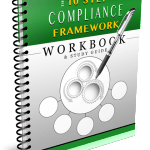Key Highlights this Week!
- Edward Jones $20 Million Fine – More disclosure rules on Muni’s coming?
- Direct Pay Bond Subsidies cut 6.8% – 2016 Budget Impact due to Sequestration
- Solving the Compliance Puzzle – Line 6 this week is Guidelines!
So…here goes…today’s Monday Muni Minutes!
Enjoy and have a great week! Deb
CURRENT EVENTS
What Edward Jones $20 Million Enforcement by SEC Means…
Last week we shared about the changes in industry growth and sense of additional needed regulatory oversight in the MA/FA arena. Well, in a “first of its kind case” it looks like we need to look  no further than Edward Jones’ recent enforcement action for overcharging retail customers on new bond security sales.
no further than Edward Jones’ recent enforcement action for overcharging retail customers on new bond security sales.
Sigh…
In this free article from the Bond Buyer, the SEC Commissioners are calling for (it reads more like screaming for to me, and rightfully so) for self-regulation…or the SEC will propose new rules itself.
Well, um yeah…
LeeAnn Gaunt, chief of the SEC’s municipal securities and public pensions unit said, “Because current rules do not require dealers to disclose markups on municipal bonds, investors receive very little information about their dealer’s compensation in municipal bond trades.”
It was noted that this enforcement found that Edward Jones violated the antifraud provisions of the SEC Act of 1933, MSRB Rules G-17 on fair dealing, G-11 on primary offering practices, G-30 on prices/commissions and G-27 on supervision.
Here are high points of the fraud:
- Deals from Feb 2009-Dec 2012
- 156 different bond deals impacted
- Deals were negotiated
- Edward Jones served as co-managers
- $20 million fine
- $5.2 million in disgorgement
- $15 million in civil penalties
Andrew Ceresney, director of the SEC’s enforcement division stated, “Edward Jones undermined the integrity of the bond underwriting process by overcharging retail customers by at least  $4.6 million and by misleading municipal issuers,” and that, “this enforcement action …reflects our commitment to addressing abuses in all areas of the municipal bond market.”
$4.6 million and by misleading municipal issuers,” and that, “this enforcement action …reflects our commitment to addressing abuses in all areas of the municipal bond market.”
So, we can expect to see more changes and rules coming…
You can read the full article – with links to the enforcement action here.
[Editor’s Note: Sigh again. This is a black mark on the muni community that we simply don’t need. When we are all struggling to make our bond compliance more transparent, accurate and timely – all with less resources – we get this. While this was not issuer fraud, it was from a member of the finance team – and perpetrated directly against the investors – the people who buy our bonds. This kind of behavior will get swift and likely painful results in muni oversight from the SEC.]
OUT & ABOUT
Conferences:
There are about 30 conferences and regional events for the second half of 2015…
You can go to this Bond Buyer link to review what’s coming up and register!
Resources:
IRS Interim Guidance on BABs and Other Direct-Pay Bonds
IRS 39-Page Memo TE/GE-04-0715-0019
See the full article in the August 3rd Edition of the Muni Minutes!
Replay: Webinar: MCDC – What Comes Next for Muni Underwriters
By: DIVER by Lumesis and hosted by the Bond Buyer
IT was AWESOME! In case you missed it…
Here is the replay link and the slides.
Check out the “muni deal of the week”…try if for FREE and look at it from the bondholder’s perspective.
On-Demand Post Issuance Compliance Training for Issuers
“Compliance Basics” – a FREE, 3-part video Compliance Framework training, plus the Monday Muni Minutes.
Just Released – with a valuable and amazingly cost-effective “team learning” option! NEW In-Depth Training, PIC Essentials: The Audit-Proven Blueprint – covering, The IDR – Form 4564, Project Accounting Boot Camp and our hot-button friend, PBU!
On-Demand Webinar
Resource: On Demand Replay of Continuing Disclosure after MCDC
Slides: Final Slide Deck for Continuing Disclosure after MCDC
Muni Market Minute Updates
(Quick news bits on topics we’ve covered in earlier MMM editions!)
Budget Zinger…6.8% Cut in Direct-Pay Bond Subsidies for 2016
Beginning October 1st, BABs and other direct-pay bonds will receive 6.8% less in subsidies, as a result of sequestration, the IRS announced last week. This is the 3rd such cut – following a 7.3% reduction in 2015 and 7.2% in 2014, respectively.
reduction in 2015 and 7.2% in 2014, respectively.
Oops – another hit to the interest expense line.
While the percentage of the cut is less than previous years, it still hurts.
“It’s good that the percentage is going down. However it should never have been imposed on direct-pay bonds to begin with.” said Bill Daly, director of governmental affairs for the National Association of Bond Lawyers.
“The application of sequestration has really hurt the acceptance of direct-pay bonds among issuers,” he said.
So what are issuers to do?
Well, many of them have simply exercised the extraordinary redemption provisions of their bonds – which ties in to news last week about how refundings have been such a big chunk of bond deals in the first half of this year.
President Obama, in his 2016 budget, has proposed creating a permanent, taxable, DP America Fast Forward Bond program, with 28% subsidies, which would be exempt from sequestration.
Dustin McDonald, GFOA’s federal liaison center director shared: “We anticipate that Congress and the administration will both continue to offer proposals for new rounds of Build America Bonds or other BAB-like bonds.”
He further said, “But there’s been no effort to mitigate the cuts already in put in place,” adding, “It’s disappointing.”
[Editor’s Note: These cuts impact BABs, qualified school construction bonds (QSCBs), qualified zone academy bonds (QZABs), new clean renewable energy bonds (CREBs) and qualified energy conservation bonds (QECBs) issued as direct-pay bonds.]
Back by Popular Demand….
Given the recent settlements by the SEC and focus on “what might be coming next” for issuers, let’s make sure we are all…
Solving the Compliance Puzzle!
I have to say that this is still one of my favorites – I fell in love with this graphic as it so clearly and brilliantly represents the puzzling complexity we are dealing with, as issuers, in meeting our compliance needs.
We also know that both the IRS and SEC are paying much closer attention to it these days – and that it is our obligation as issuers to understand (and have fully complied with) our respective bond covenants.
As part of this effort, each week for ten weeks, we will focus on providing tips, insights and resources for one new line of our compliance puzzle.
So, are you ready?
Today, we are going to zoom in on the sixth line of our puzzle – Guidelines.
A quick question: Have you ever felt like this before?
You want to find out the guidelines to something – it could be something as simple as the current standard mileage rate for reimbursements to something rather specific, like what are the 10 key areas you need to focus on to make sure your bonds are in compliance.
With the global reach of the internet, finding the right and simple answer to virtually ANYTHING should be as simple as typing what you want into “search” on Google.
No problem, right?
However, in many instances, what really happens is we fall straight into the sea of conflicting information – or worse yet…misinformation. When you are dealing with your bond covenants and millions of dollars in interest expense is on the line, conflicting or flat out wrong information can be costly…really costly.
For kicks, go to the IRS and type in the word “guidelines” – amazing how many results you get, isn’t it?
I remember when I first started working on our bond compliance binders back in the early 2000s – the laws and exceptions were so complex – and I was so new to the field. All I wanted was simple guidelines that pointed me in the right direction
Simple guidelines so I could start putting the mountains of data I had into some semblance of order and then get back to my “normal duties,” not these “other duties as assigned” ones.
Can you relate to this feeling?
I remember having SO many conversations with our bond and tax counsel and asking, “what are the 10 key areas I need to focus on to organize all this stuff?”
I just needed some straightforward, understandable answers so I could adopt proper accounting guidelines and move forward. After many rounds of calls and several bond binders later, here is what we finally came up with:
Below are example numbers to illustrate how the 10 steps work…
| $250,000,000 | PAR |
| (1,509,585) | OID |
| 1,206,321 | Premium |
| (15,775,182) | Reserves Deposit |
| (23,990,131) | Construction Period Interest |
| 11,833,096 | Investment Earning |
| $221,764,519 | |
| 95% | Good Use Threshold |
| $210,676,293 | Good Use |
| $213,712,360 | Qualifying Expenditures |
| $3,036,067 | Excess (Deficit) to meet 95% Good Use Test |
These are simply the guidelines that I used for many years. We also dive deep into this formula and how to apply it to your bond program in Issuer 2 Issuer’s course, PIC Essentials: The Audit-Proven Blueprint.
Please note: Following this formula guideline for organizing your bonds does not guarantee that you won’t find some snarly things in your records.
In fact, they may actually do the opposite – and shed light on violations, errors or other uses of funds that may need to be addressed with bond counsel. That is what happened to me…but we addressed them one by one and all was well…even through all four of the IRS bond audits.
We hope you found this segment helpful! Stay tuned – next week, we’ll explore the next item in our series – it’s line 7 of the puzzle – Laws.
Remember, take small bites. For more information or other “guidelines” resources, check out our Knowledge Library. You can also ask a question in the comments section or reach out to us privately via e-mail and we’ll do our best to help.
We really do look forward to your feedback – and to provide the best content possible.
Based on recent requests, I will be working with a couple of “finance team experts” who will provide guest articles on selected topics in muni finance, including the new rules for MAs and the investor view. Are there other topics of interest?
Just shoot me an e-mail or drop us a line in the comments below and let us know, OK?
In closing, we are so excited that PIC Essentials: the Audit-Proven Blueprint is now available! A special welcome to members who joined us. We look forward to your comments, questions and chatting with you in the Private Facebook Group – Club PIC!
NOTE: You can still join the learning group here: PIC Essentials: the Audit-Proven Blueprint.
Plus, as we believe so strongly in the team approach to success, we are offering a tremendous “team discount,” where you and four additional compliance members within your agency or company can join the series right along with you…for only $70 more!
We hope you found this week’s edition of the Monday Muni Minutes valuable and informative.
Chat soon!
As always, your comments are welcome…scroll down and let us know what you think about any of the articles!
To your compliance success,
Debbie
The greatest compliment you can pay us is to share this newsletter with your issuer friends….
P.S. Remember, invite your issuer friends to join us on Issuer 2 Issuer and to get their free online training, PIC Basics!
P.P.S. PIC Essentials: the Audit-Proven Blueprint is now available! You can sign up for the informative, on-demand webinar series by clicking above! Read about the “Team Discount” above! It’s truly a great deal.
P.P.S. Want a one-click way to get faster information? If you are on LinkedIn, you can get access to breaking muni news articles as well as interesting compliance tips and resources, posted by us during the week. Join our private LinkedIn Group Page, and follow us on our Company Page.




Debbie et al –
Can I sign up for this newsletter directly rather than pick up re-posts on LinkedIn?
Thanks!!
– Bill
Hi Bill, Thanks for reaching out and we are glad you find the Minutes valuable!
Yes, you can sign up to have them delivered to your inbox by going to our main page under the “free video training” and sign up there.
In accordance to federal law, we need to have you sign up to receive our content via e-mail. You will then receive a confirmation e-mail – simply click the link to confirm and you will be all set!
As a new member of Issuer 2 Issuer, you also receive access to our free 3-part training on post issuance compliance basics as well as a discount on our practical, hands-on and over-the-shoulder training called PIC Essentials: The Audit_Proven Blueprint.
Let me know if you have further questions!
With kindest regards,
Debbie